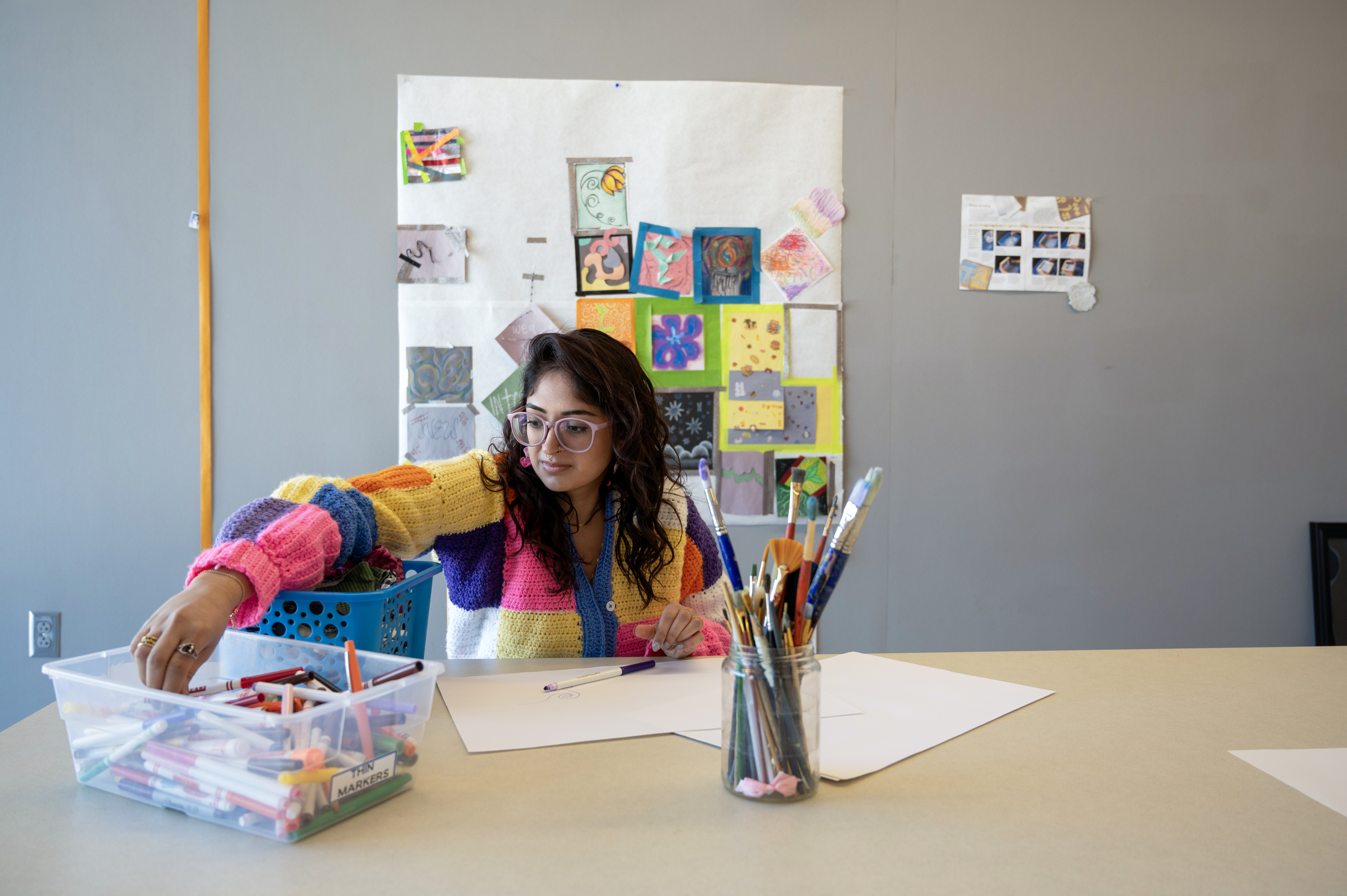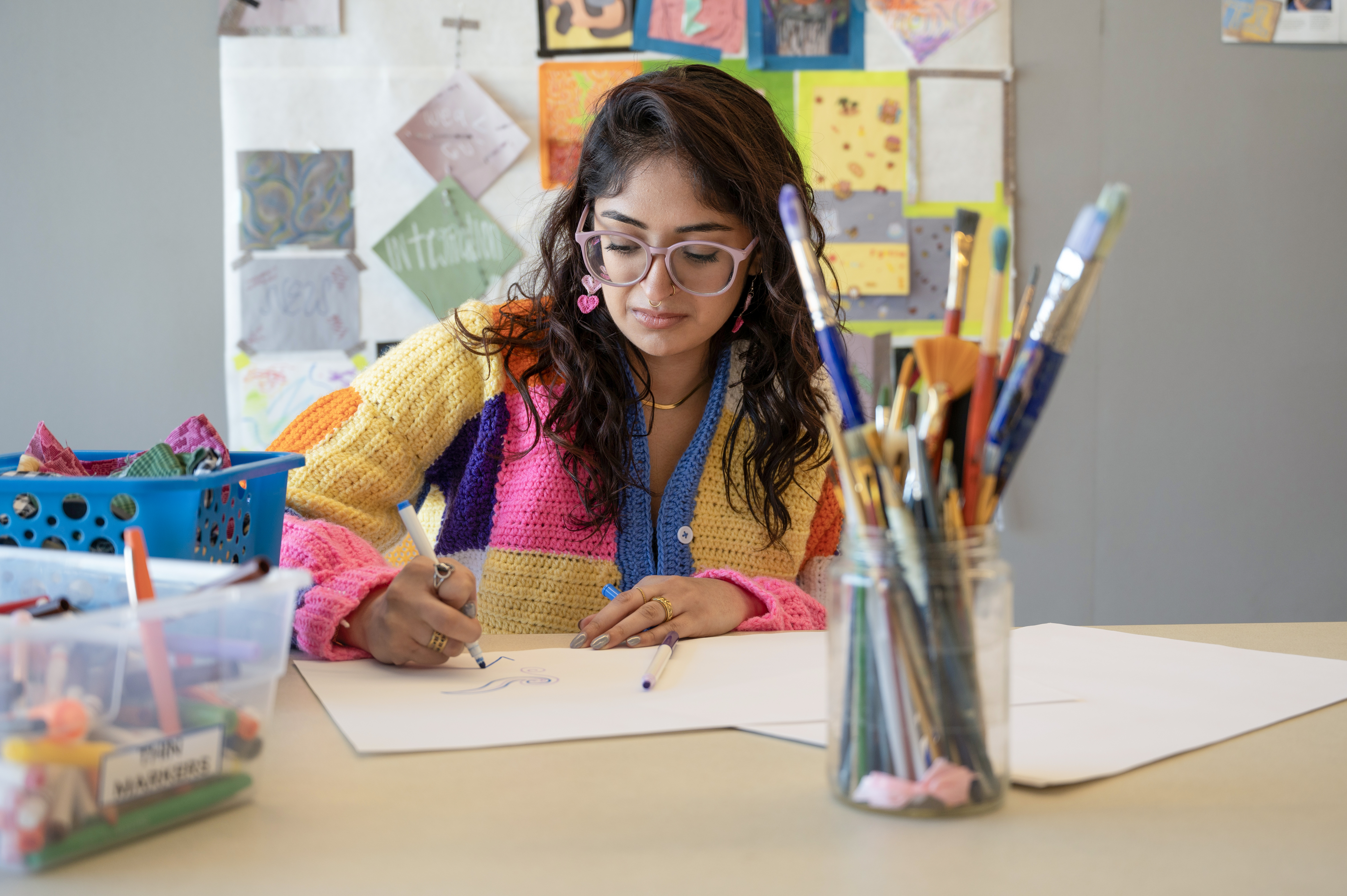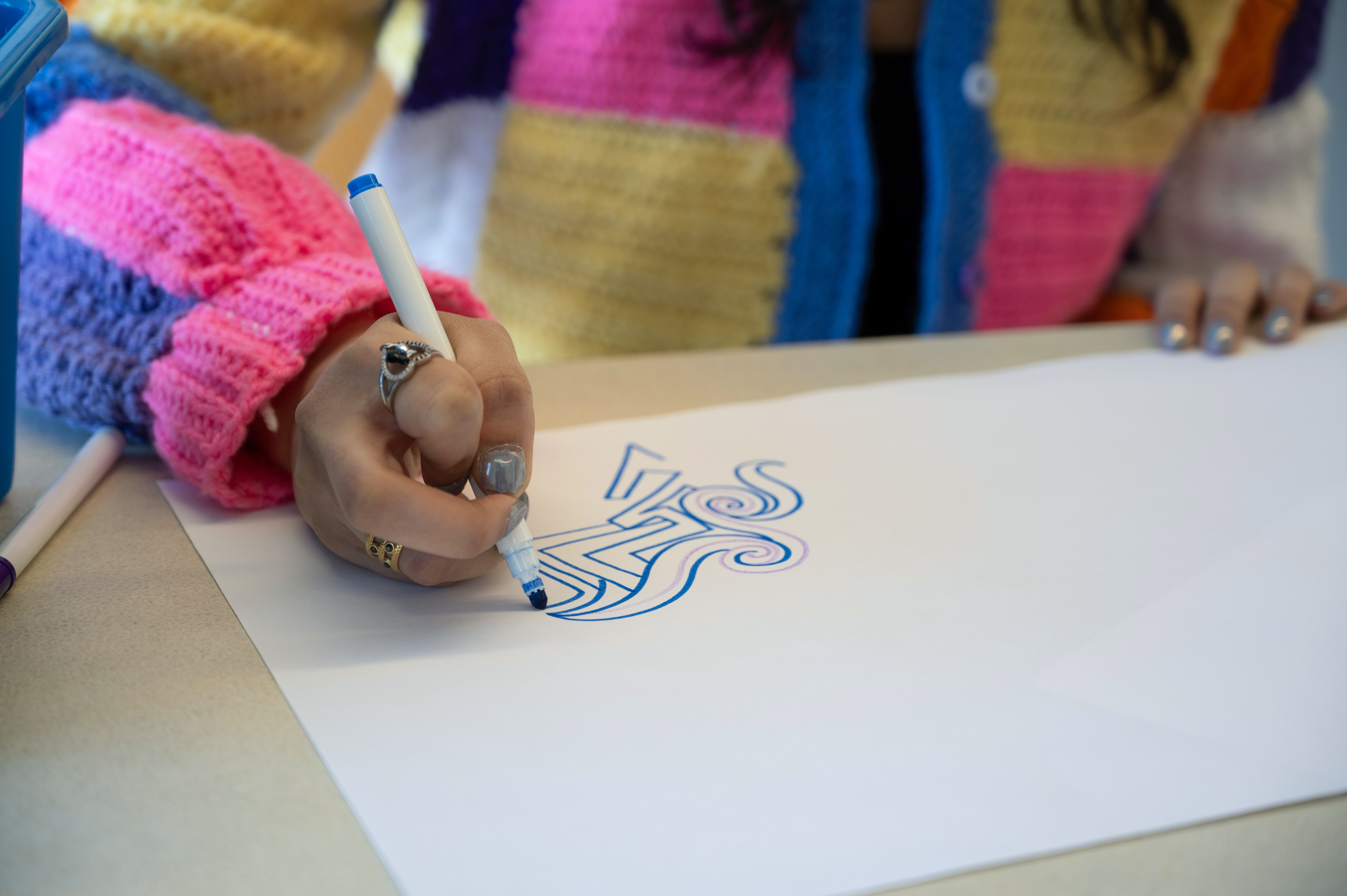Q&A with Art Therapy Student Tara Duggal
March 14, 2024

What first drew you to art therapy and counseling?
I have always been interested in the healing power art and creative expression can have. Creating art is a unique form of self-expression, and I believe that by making art you can learn and explore parts of yourself. I feel that art therapy is a unique blend of my interests of art, creativity, psychology and exploration. While I was completing my undergraduate degree in fine arts, I was searching for a way to combine my interests of art and psychology. I felt that art therapy was a perfect landing place for me.

Do you have to be an artist to become an art therapist?
To be an art therapist, it is important to have a strong knowledge of different art mediums and materials. I don’t think that someone needs to necessarily identify as an artist to be an art therapist. I think that many art therapists are artists and have their own practice of making art, but that’s not a requirement to being an art therapist. Artist identity is something that can change and develop over time.

How are creative arts therapies different than other kinds of therapy?
I think that art therapy is different from other forms of therapy because it allows for more self-expression and nonverbal communication. I think most people have heard the saying “A picture is worth a thousand words.” Creating art and engaging in the process of art making can reveal a lot about someone’s inner emotional experience that verbal words might not communicate.

What’s involved in becoming an art therapist? Do I have to have an undergraduate degree in art or psychology?
To become an art therapist someone will first need to obtain an undergraduate degree. There are a certain number of psychology and fine art credits required to apply to an art therapy master program. I was a fine arts major and a psychology minor.